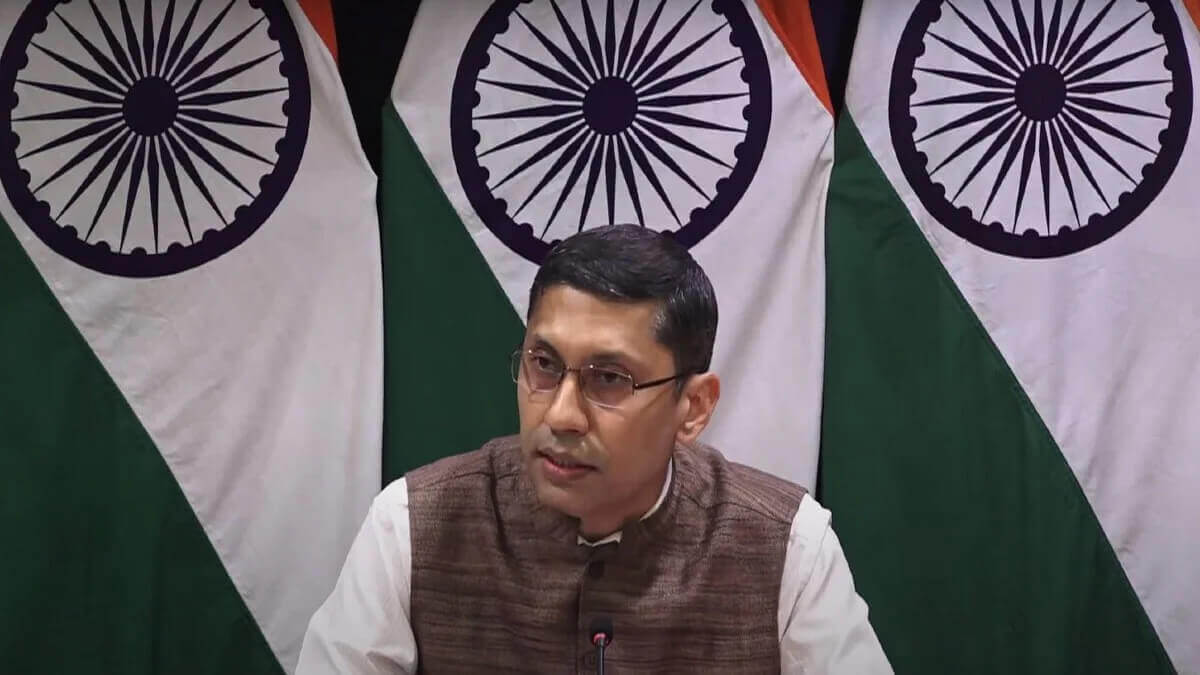On 8 September, India and China began the disengagement process at Gogra Hot Springs (PP-15) as per an agreement reached at the 16th round of the India-China Corps Commander Level Meeting in July. Over the last four days, the two sides have withdrawn soldiers and taken down temporary infrastructure set up along the Line of Actual Control (LAC) for the first time since the deadly Galwan Valley clash in June 2020.
As per a joint statement released last Friday, Indian and Chinese troops have “disengaged in a coordinated and planned way, which is conducive to the peace and tranquility in the border areas.” The process is expected to be completed today.
Responding to a media query on the disengagement process, Indian Ministry of External Affairs spokesperson Arindam Bagchi confirmed that as per the mutually agreed upon terms, the disengagement process began on September 8 at 8.30 AM and will be completed by September 12.
He added, “The two sides have agreed to cease forward deployments in this area in a phased, coordinated and verified manner, resulting in the return of the troops of both sides to their respective areas.”
Breaking: The disengagement at area Gogra- Hot Springs (PP15) will be completed by September 12. pic.twitter.com/CKkzQ8YEeY
— Rajgopal (@rajgopal88) September 9, 2022
Bagchi confirmed that “all temporary structures”, including “allied infrastructure”, will be “dismantled and mutually verified.” He added that all landforms in the Gogra Hot Springs area will return to “pre-stand-off periods by both sides.”
In addition, Bagchi said that the agreement will ensure that the LAC is “strictly observed and respected” by both India and China to ensure that there is no “unilateral change in status quo.”
Chinese foreign ministry spokesperson Mao Ning celebrated the development as “conducive to peace and tranquillity in the border areas.” Mao noted that both sides are committed to restoring peace and tranquillity along the mutual border area in the Western Sector, which she said would “promote [the] development of bilateral relations.”
She stressed, however, that “the status quo of April 2020 was created by India’s illegal crossing of the LAC,” adding, “We don’t accept the so-called status quo” created by India’s ‘trespassing.’
Disengagement at Gogra/Hot Springs by Indian Army & PLA is good news. But means little - since buffer zone will be in Indian area.
— Pravin Sawhney (@PravinSawhney) September 8, 2022
PLA refuses to negotiate on Depsang area - where one front reinforced war (Siachen sandwiched between East Ladakh & Pak military) will be fought!
According to an anonymous Indian official quoted by Hindustan Times, the disengagement will create a “buffer zone” of 2-4 kilometres along the LAC, as was done during previous agreements.
Another government official told the Indian Express that army commanders and officers have been given “strict instructions” to verify the disengagement while ensuring that the process is carried out without any escalation of tensions.
An opinion piece in the Chinese state-run news outlet Global Times quoted Lin Minwang, a professor at the Institute of International Studies of Fudan University, as saying that the disengagement marks a “positive trend” that will ease tensions along the border after over two years of heightened tensions.
Another Chinese expert remarked that vulnerable border areas will now see a “positive atmosphere,” thereby strengthening “mutual trust between the two militaries.”
Indian commentators, however, have cautioned against interpreting the Gogra Hot Springs as a reset in India-China ties. For instance, military affairs expert Lieutenant General DB Shekatkar has said, “Given the experience of dealing with China, we have to be cautious. Over the last three decades, India has signed several agreements with China for border peace, but it has always betrayed us.”
The disengagement comes in furtherance of a mutually agreed upon consensus reached during the last round of military talks in July, during which the two sides agreed to “disengage in a coordinated and planned way.”
Joint Press Release of the 16th Round of India-China Corps Commander Level Meeting:https://t.co/72pIsJi4v3@IndianDiplomacy @MEAIndia pic.twitter.com/90EERBOM5M
— India in Guangzhou (@cgiguangzhou) July 19, 2022
The 16th round of border talks came only days after Indian External Affairs Minister (EAM) S. Jaishankar and Chinese Foreign Minister (FM) Wang Yi called for an “an early resolution of all the outstanding issues along the LAC in Eastern Ladakh” following their meeting on the sidelines of the G20 Foreign Ministers’ Meeting in Bali.
The Gogra Hot Springs disengagement is the first such breakthrough the two sides have reached since August 2021, when they agreed to disengage from the Gogra Sector (PP-17A) during the 12th round of talks. They had previously agreed to disengage from Galwan Valley and Pangong Tso.
The two sides remain deadlocked in discussions on the Depsang Bulge in the Daulet Beg Oldi sector and the Charding Nullah Junction (CNJ) in the Demchok sector. Both sides also retain a troop presence of 60,000 troops along the LAC.

